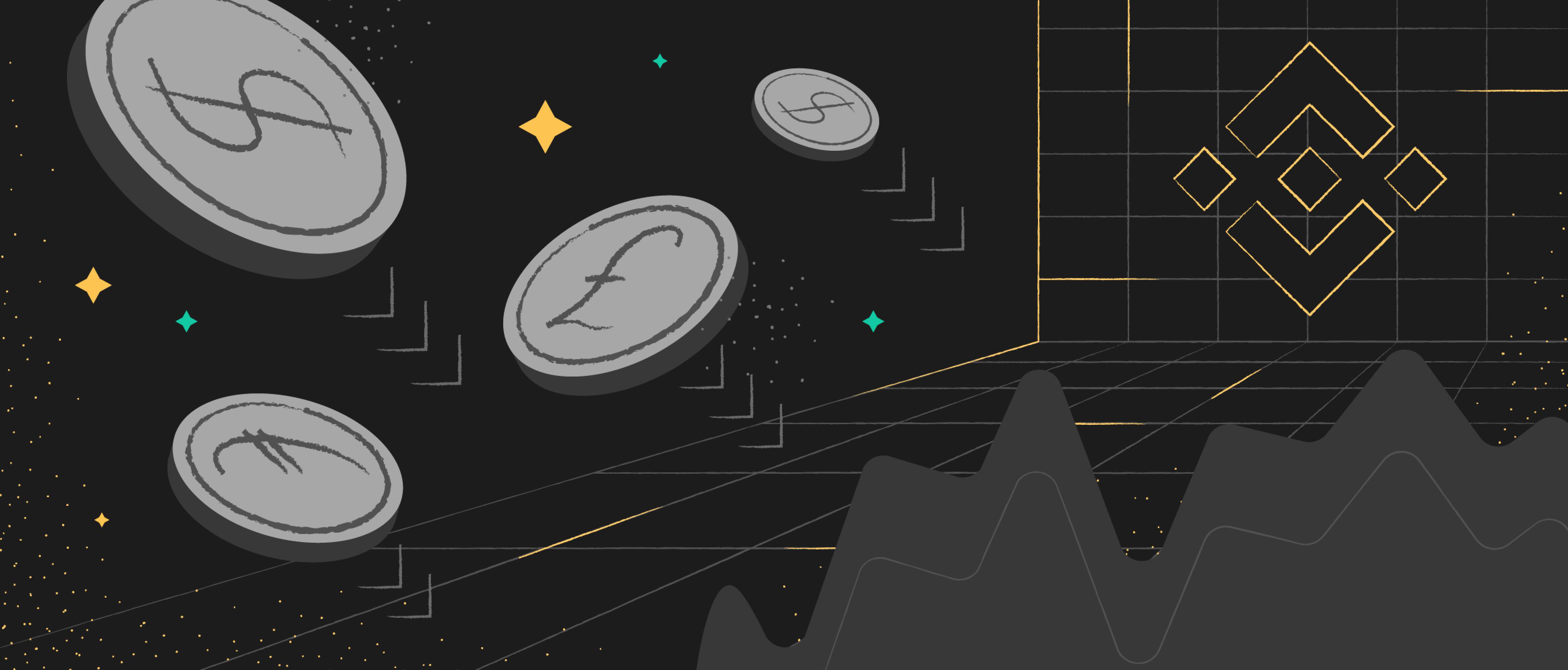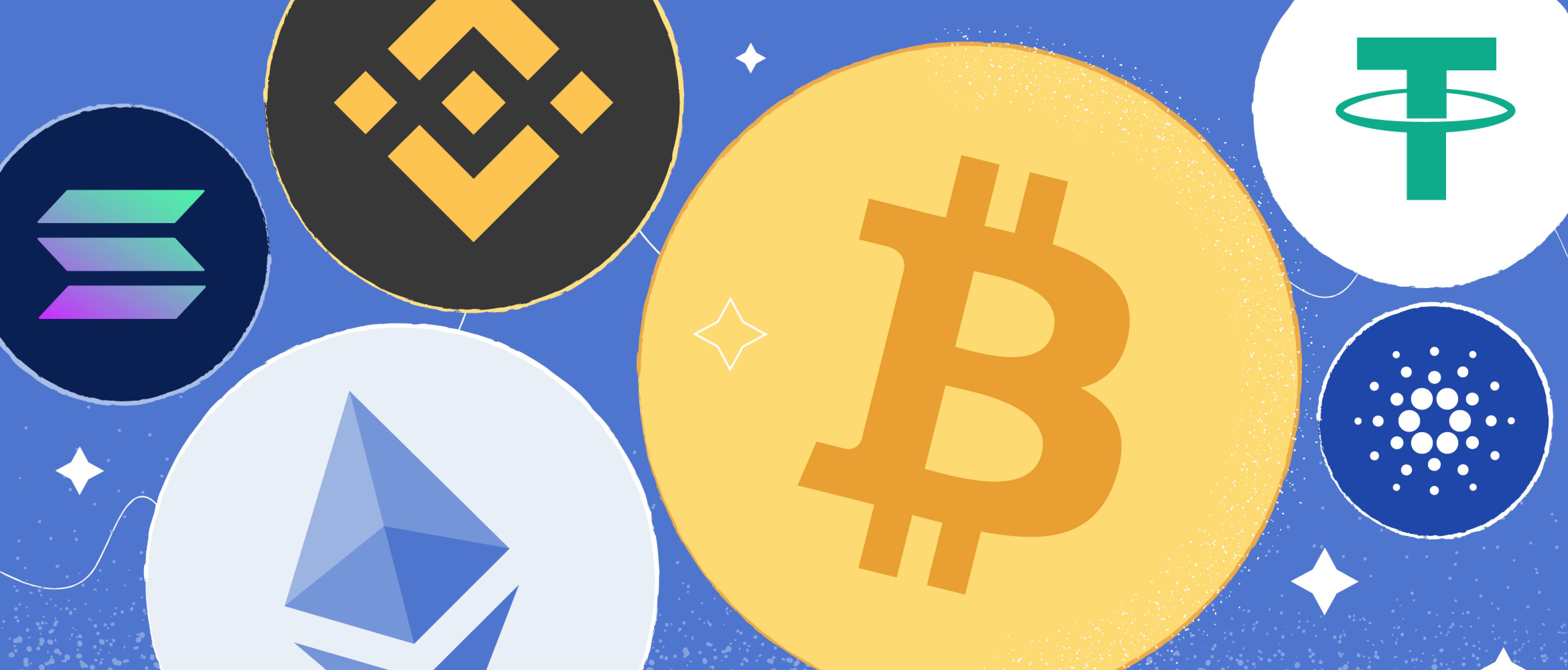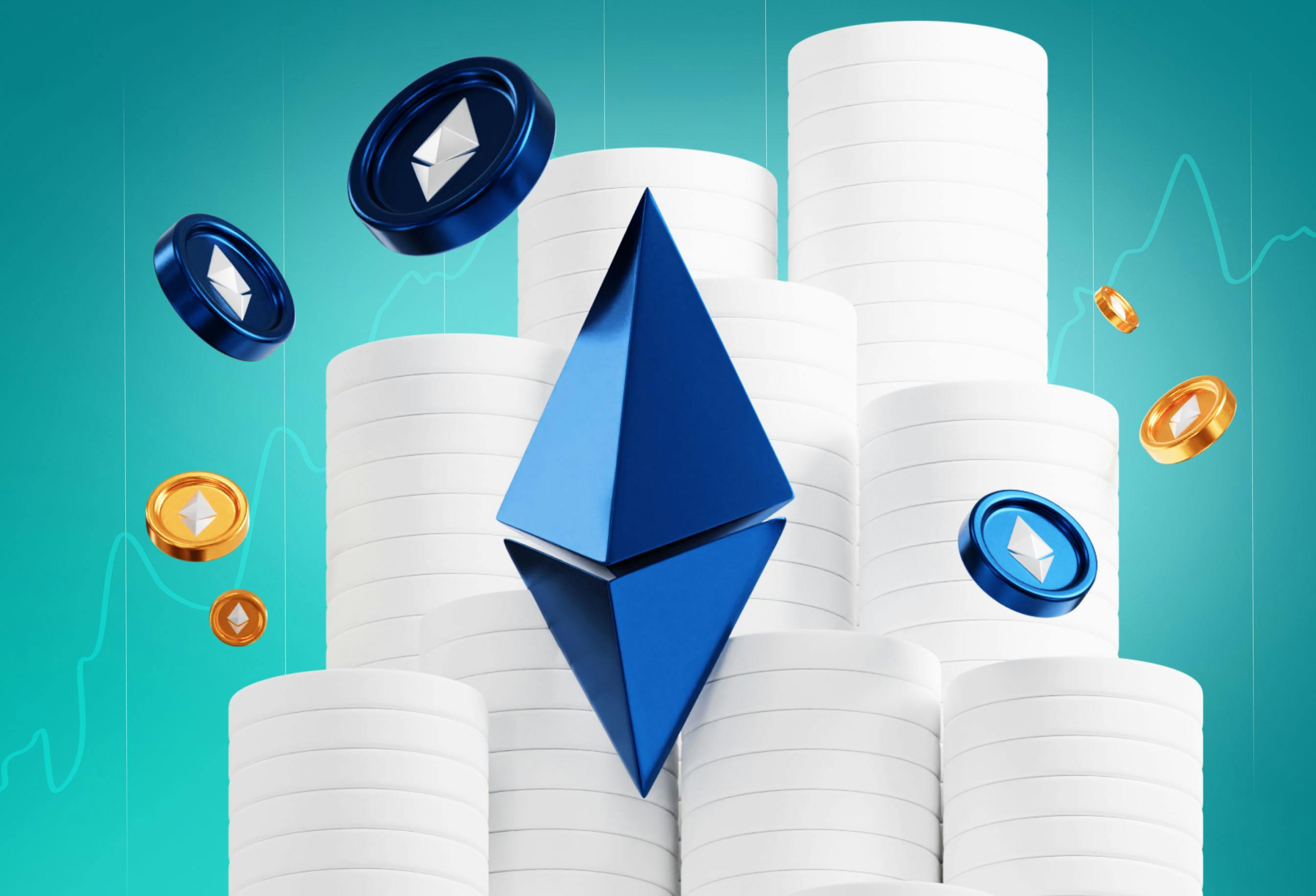
- All
- Analytics
- Technical Analysis
- Trading
- Blockchain
- DeFi
- Guides
- Company News
- Educational
- Opinion
- Price Predictions
- Tools
- Market News
- News
- Trading cases
- Practical guides
- Exchanges
- Trading signals
- Cryptocurrency
- Crypto bots
- Other
Become a crypto master
Learn everything about crypto,
trading and bots

How to Start Crypto Futures Trading in 2025
Why crypto futures trading? Briefly, futures allow you to hedge portfolio risk and increase profit potential through the use of leverage. To start trading crypto futures, you can follow the seven simple steps described in this article, from opening an account to closing your first position.
Start Trading on 3Commas Today
Get full access to all 3Commas trading tools with free trial period

How to trade cryptocurrency futures
To capitalize on the crypto market’s volatility, seasoned investors use crypto futures, a financial instrument that helps hedge your portfolio (mitigate risk). If you are not sure what crypto futures trading is, consider reading more at 3commas Academy for trading in 2025.
Here are the basic steps to successfully begin your crypto futures trading journey, using Binance.com as an example. (Except Binance US, you can’t trade futures on Binance in the United States).
Step 1. Sign up for a free Binance account
Click Open Now to get started.
Binance requires you to take a short quiz to make sure you’re ready to trade futures. If you don’t pass the test, you'll have to refresh your knowledge and retake it. Until then, you won't be able to trade futures. This way, the system protects newbies from losses.
You’ll need to answer 14 questions to pass the quiz. Here is what the questions might look like:
1. Which of these is not the key difference between USDT-margined futures and coin-margined futures?
- Types of collateral
- Size unit
- Leverage level
2. What can the maximum loss for trading in a futures contract be?
- 100% of collateral
- 30% of collateral
- 50% of collateral
Some questions feature clickable hints. Check them out if you want to learn more and pass the quiz.
If you’re not sure that you can pass the quiz, consider reviewing the tutorial section. Once you’ve answered the questions, it’s time to choose your first contract.
Step 2. Choose a contract you want to trade
There are USDT-M Futures and Coin-M Futures available.
- USDT-M Futures are USDT-margined futures that use stablecoin like USDT as a collateral. Profit & Loss (PnL) is denominated in USDT.
- Coin-M Futures are coin-margined futures that use base assets as collateral. For instance, BTC-USD Quarterly 1120 (November 20th) futures use BTC as collateral. PnL is denominated in BTC.
Step 3. Getting started
You have to select a futures trading mode to get started. To adjust the position mode, click the More icon (3 dots):
Currently, two futures trading modes are available:
- One-way mode
- Hedge mode
Choose one of the trading modes and continue.
Then, set the margin mode and leverage multiplier.
There is a Cross mode and an Isolated mode available.
Cross margin mode: Share your margin balance across all open positions to avoid liquidation. You risk losing your entire margin amount, as well as any active trades if your account is liquidated.
Isolated Margin Mode: Manage your risk on individual positions by restricting the amount of margin allocated to each. When a position's margin ratio reaches 100 percent, the trade is liquidated.
Now, let’s set up the leverage.
You can manually adjust the leverage. The maximum amount of leverage available depends on the notional value of your position.
At this point, it’s crucial to manage the risks properly: the higher the leverage, the higher the risk. Some traders consider a 1:5, 1:10, or 1:20 ratio optimal. For example, 1 to 5 leverage means that having a deposit of $100 you can make a deal with a lot of $500; For 1:10 and 1:20 leverage the deal’s size is $1,000 or $2,000 respectively. Leverage higher than 1:20 might be an excessive risk for most newbies.
Step 4. Transfer assets into your Futures account.
If you want to trade USDT-M Futures, you can transfer assets from Spot Wallet into a USDT-M account. For detailed information about wallets, check out how to use a crypto wallet at 3commas Academy.
Alternatively, you can transfer into a Coin-M account if you want to trade Coin-M Futures.
Step 5. Open a position.
Binance supports different order types, for example, stop limit, stop market, trailing stop, etc.
You can find more details by hovering over the Information tab and going to Guide.
By selecting the Buy/Long position, you can, for example, buy 1 BTC. The initial margin cost is indicated at the bottom part of the picture.
You can upskill your trading and earn more by exploring advanced settings such as TP/SL and Reduce-only.
Take Profit (TP) is an order to automatically close the deal with profit when the price level is reached. This order is typically placed when the trader continuously monitors the open trade or expects a substantial price change.
A Stop Loss (SL) is a command to the exchange to close a deal after a specific threshold of price loss has been reached. For instance, let's say you want to acquire an asset for $50. The asset's price might increase or lose its value, resulting in a negative balance, such as -$35. If you don't want to lose more than $7 on a transaction, you may set a Stop Loss, which is the price level at which the deal will be immediately canceled, ensuring that you only lose the minimal amount.
The picture below shows what the Take Profit/Stop Loss window might look like:
Step 6. Monitor your position
All your positions are listed at the bottom part of the website. You can check each position’s estimated liquidation price, margin ratio, and potential profit & loss.
Margin ratio and asset details are placed on the right side, where you can track them to evaluate the risk in no time. You can then choose to either close the position or add a margin to reduce the liquidation risk.
Step 7. Close your position
You can close your position by selecting Limit Close or Market Close directly in the position section.
Alternatively, you can use the place order section. Remember to check Reduce-Only under One-way Mode.
Under Hedge Mode, switch to the Close tab.
General crypto futures trading tips
- One of the most valuable recommendations for risk management is that you should never invest more than you're ready to lose.
- Never trade on borrowed money (like credit cards) unless it’s margin trading.
- Make sure to learn futures trading: find the right entry points, manage the leverage ratio, and monitor your open positions.
- Choose a reliable platform to trade futures. Reputation is a crucial factor when choosing a crypto exchange such as Kraken, Bybit, and more.
- If you use leverage, you should check the position’s margin, which fluctuates with the price. If it falls below a certain threshold, your position will be liquidated, and you will incur a loss.
Have you ever wondered what's the difference between manual and algo trading? Search no more: check out 3commas Academy to get a comprehensive answer.
Before you start crypto futures trading
Despite the similarities, futures trading is not the same as ordinary trading. Here are a few essential factors to consider:
Market volatility
The high volatility of cryptocurrencies and related futures is essential to be aware of while trading them. While this is generally considered by many to be a risk, at the same time it provides a great deal of opportunity. This is especially important for short-term traders who prefer to speculate on rapid price shifts. Cryptocurrencies are still a tiny market compared to forex or stocks. As a result, digital assets are vulnerable to dramatic swings due to whales or other industry-related events.
Leverage trading
Leverage is an essential feature of margin trading that most futures trading platforms offer. While crypto exchanges typically feature leverage up to 50x, Binance provides leverage up to 125x. Trading with high leverage can potentially yield high profits for advanced traders, but there is still a risk that the position will be liquidated.
When trading futures, beginners should avoid investing with high leverage, but a minimal level may help. The leverage chosen determines the margin required to trade. For example, if a trader chooses 10x leverage, then 10% of his funds will be involved in the position, and the rest will be borrowed from the exchange.
Hedging
Crypto futures trading is an excellent hedging method against traditional assets or the possibility of a sharp drop in the cryptocurrency itself. Bitcoin futures trading is not subject to extreme losses in the price of BTC on the spot market because the futures contract has a predetermined price on the expiration date.
Diversification
In addition to hedging, crypto futures allow you to diversify your capital. It's no secret that diversification is one of the best money management methods available to traders and investors. You can open several positions in Bitcoin (BTC), Ethereum (ETH), Chainlink (LINK), and many other coins/tokens to create a well-diversified portfolio consisting of futures contracts. This way, you can reduce the risk of problems with one asset that may unexpectedly fall in price.
Liquidity assessment
There are three primary criteria for assessing liquidity while trading futures: asset liquidity, exchange liquidity, and market liquidity. A trader should always examine if there are enough buyers, sellers, makers, and takers, as well as the asset's and market's overall health.
Because most futures contracts are structured through cash settlement, most crypto futures marketplaces have more liquidity than spot exchanges. Price drops are significantly less likely when there is enough liquidity. But the fundamentals must always be met to reduce risk.
End date
Let's say you're a bitcoin futures trader who prefers to settle with cash. The expiration date is essential in this situation since you receive your cash or stablecoins when the contract is settled. You may, however, sell your open futures contract at any moment before it expires, locking in a profit or loss based on spot price movements.
Summary:
The article, originally published in July 2021 and updated in March 2025, provides a comprehensive guide on how to start trading cryptocurrency futures. It highlights the reasons for engaging in crypto futures trading, such as portfolio risk mitigation and profit potential through leverage. The article primarily focuses on trading crypto futures on Binance, a popular cryptocurrency exchange.
The seven steps outlined in the guide are as follows:
Step 1: Sign up for a free Binance account Prospective traders must create a Binance crypto futures account. To ensure readiness, a quiz with 14 questions covering key differences between USDT-margined and coin-margined futures and maximum loss scenarios is required to be passed. This quiz serves as a safeguard for new traders.
Step 2: Choose a contract you want to trade Binance offers USDT-M Futures and Coin-M Futures, each with its unique characteristics. USDT-M Futures use stablecoins like USDT as collateral, while Coin-M Futures use base assets like BTC. Traders must choose their preferred contract type.
Step 3: Getting started Traders select their preferred trading mode, either One-way mode or Hedge mode, and set their margin mode (Cross or Isolated) and leverage multiplier. The article emphasizes the importance of managing leverage to mitigate risk effectively.
Step 4: Transfer assets into your Futures account Traders can transfer assets from their Spot Wallet into a USDT-M or Coin-M Futures account, depending on their chosen contract type.
Step 5: Open a position Binance supports various order types, including stop limit, stop market, and trailing stop. Traders can also explore advanced settings like Take Profit (TP) and Stop Loss (SL) to enhance their trading strategies.
Step 6: Monitor your position The article advises traders to keep a close eye on their positions, providing essential information such as estimated liquidation price, margin ratio, and potential profit and loss. Traders can choose to close their position or add margin as necessary.
Step 7: Close your position Traders can close their positions directly in the position section, with options for Limit Close or Market Close. The article also mentions the importance of using the "Reduce-Only" option under One-way Mode for risk management.
The article concludes with valuable tips for crypto futures trading, including never investing more than one can afford to lose, avoiding borrowed money for trading, and choosing a reputable trading platform. It emphasizes the significance of risk management, given the high volatility of cryptocurrency markets, and the need to assess liquidity, both for assets and exchanges. Diversification is encouraged as a way to manage risk, and the article underlines the importance of understanding the end date of futures contracts.
Conclusion:
As of March 2025, the article remains a relevant and informative guide for individuals interested in entering the world of cryptocurrency futures trading. The cryptocurrency market continues to experience volatility, and the use of leverage in futures trading remains a prominent feature. Platforms like Binance continue to be popular choices for traders.
The article's emphasis on risk management, including responsible leverage usage and diversification, is particularly important in the dynamic crypto landscape. As the market matures and evolves, understanding the mechanics of futures contracts and assessing liquidity continue to be crucial aspects of successful trading.
In conclusion, the article's practical steps and insightful tips make it a valuable resource for anyone looking to venture into crypto futures trading, with its updated information ensuring its relevance in the ever-changing crypto ecosystem of 2025.
2025 Update: Key Developments in Crypto Futures Trading
As the digital asset landscape matures, new developments in 2025 are reshaping crypto futures trading. These trends are especially relevant to professional traders, asset managers, and institutional participants deploying algorithmic strategies and automation tools.
Regulatory Advancements
In early 2025, Executive Order 14178 reshaped federal digital asset policy, formally ending CBDC initiatives in the U.S. and prioritizing a unified legal framework for digital asset oversight. This has paved the way for broader institutional adoption of cryptocurrency automated trading bots, particularly in regulated futures markets.
The Financial Innovation and Technology for the 21st Century Act (FIT21) continues to define how futures contracts and digital commodities are supervised—an essential step for firms using bot trading cryptocurrency tools across multiple jurisdictions.
Market Innovations
The derivatives market is expanding, with CME Group introducing Solana futures, and Coinbase launching 24/7 perpetual futures. These products complement bots for crypto trading strategies and support high-frequency execution through crypto trading bots.
In parallel, adoption of bot trading platforms and crypto bot trading software has accelerated. Institutional desks and proprietary trading firms are increasingly running bot signal trading frameworks that respond to market volatility using AI and machine learning components.
Whether you’re using a bot to trade crypto on OKX or a crypto signal bot on Binance, the trend toward automation is clear: traders are seeking more responsive, lower-latency execution options.
Institutional Participation
Automation is becoming central to professional trading workflows. Asset managers are integrating crypto auto trading bots and cryptocurrency trade bots into their execution stacks to handle risk management and strategy deployment at scale. The focus is shifting from manual execution to sophisticated systems that run 24/7 with minimal intervention.
Meanwhile, brokerages like Kraken have begun to merge traditional asset classes with crypto, and Coinbase’s investment in coinbase trading bots has helped democratize access to automated futures strategies for mid-sized trading firms.
Strategic Considerations
Looking ahead, here are three tactical priorities for futures traders:
- Compliance Alignment: Ensure your crypto bot app or trading bot for cryptocurrency solution supports current and upcoming regulatory requirements.
- Execution Efficiency: Use bots for crypto trading to reduce latency and mitigate slippage in fast-moving futures markets.
- Risk-Aware Diversification: Consider bots for trading cryptocurrency with portfolio hedging capabilities to manage exposure across exchanges and asset pairs.
With these tools in place, firms and professional traders can adapt to a more structured, automation-led future in crypto derivatives.
FAQ
Anyone interested in trading cryptocurrencies can start by trading futures. This financial tool is especially suitable for those who want to start using cryptocurrency without actually keeping it in digital wallets or worrying about its security. However, futures trading isn’t recommended for newbies.
Cryptocurrency futures trading can be very profitable if you manage your risks properly. For regular traders, this activity can be more beneficial than bitcoin mining or regular trading. But like any other form of trading, there are significant risks that should not be ignored.
You need an exchange to start futures trading. Select a reliable exchange and open up an account. Once you fund your account, you can trade crypto futures.

A proven leader, successful at establishing operational excellence and building high-performance teams with a sharp focus on value creation and customer success.






